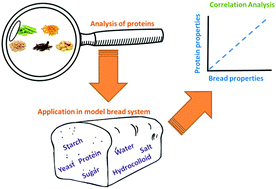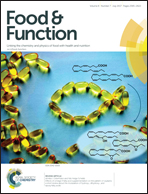Correlation analysis of protein quality characteristics with gluten-free bread properties
Abstract
The interest in gluten-free cereal products has increased significantly over the last number of years and there is still a high demand for high quality products. This study aims to establish possible connections between protein properties and dough and bread quality which could advance the knowledge for gluten-free product development. The objective of the present study was to correlate protein properties with bread characteristics. Therefore, a wide range of tests (solubility, emulsifying, foaming, water hydration properties) was performed to characterize a range of food proteins (potato, pea, carob, lupin and soy). Furthermore, the performance of these proteins in a dough matrix (pasting, rheology) and bread formulation (volume, structure, and texture) was analysed. Statistical analysis showed significant (p < 0.05) correlations between protein properties, dough properties and final bread characteristics. The addition of the proteins to the gluten-free bread formulation affected pasting rheological and bread characteristics such as crumb density, crumb hardness and specific volume. The addition of potato and soy protein resulted in the lowest volume with a dense crumb structure and a low consumer acceptance score. However, lupin, pea and carob containing gluten-free breads had a higher specific volume and softer and less dense crumb structure. The protein solubility (r, 0.89; p < 0.01) and its foaming properties (r, 0.97; p < 0.05) were found to be the most important protein properties with correlations significantly with dough properties and bread quality.



 Please wait while we load your content...
Please wait while we load your content...